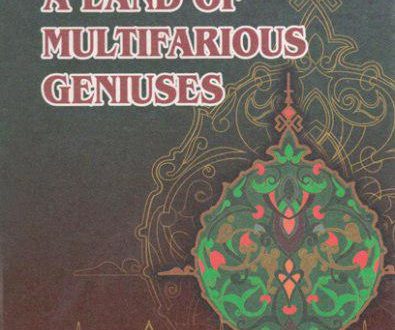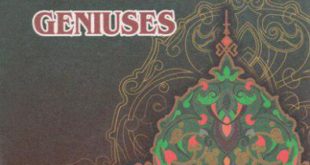“Kitab al-qand” by Abu Hafs an-Nasafi
Up to the beginning of the 20th century, “Kitab al-qand” by Abu Hafs an-Nasafi was considered to have been lost in the course of time. Its discovery was good news in the field of studies of the history of our country, especially the history of Hadiths in Samarkand. A rare manuscript of the book was found in 1967 in the “Suleimania Library” of Istanbul in Turkey. It was preserved in “Turhan Valde” fund under the code of 70. In 1991, the manuscript was published in the form of a book by Nazar Muhammad al-Faryabi, who created a good possibility for readers and learners to familiarise with the book.
In 1999, a researcher from Lebanon Yusuf al-Hadi created another copy of its critical text. In order to create this text, Yusuf al-Hadi used two versions of the work: Istanbul version and Parisian version of the Arabic manuscript which is preserved in the National Library of Paris under the code of 6284.
In 2001, “Kitab al-qand” was translated and published into Uzbek by two translators: Usmankhan Temurkhan oghli and Bakh-tiyar Nabikhan oghli. As a result of this good deed, a wide range ol readers could have a possibility of reading this precious book.
“Kitab al-qand” is a book created in the genre of “ilm ar-rijal” (a historical-biographic genre) of the science of Hadiths.
The real changes taken place in the life of Muslims had noticeable influence on the structure and composition of the “tabaqat genre.
In “Kitab al-qand”, the author tried to compile the names <>l the scholars in the alphabetical order. Groups formed in accord with the initial letters are given in the alphabetical order. For instance after such names as Khalid, Khalaf, etc. come such names as Davud, Zakvan, etc. However, the contents of the group are compiled n
accord with the status of the person he occupied in the history of Islam and his contribution to the science of Islam or in the chronological order rather than the alphabetical order. For instance, according to the Arabic alphabet, the name of Qutayba ibn Muslim (704-715) must precede the name of Qusam ibn al-Abbas (died in 675) but in the book, the biography of Qutayba is given after the biography of Qusam. Moreover, the names of scholars beginning with Ali,in accord with the history of the early caliphs, are given after the names of estimated caliphs as Umar and Uthman,etc. The names given in the list are usually preceded by their titles or nicknames. For instance, the biography of ash-Sheikh al-Imam Abul-Hasan Ali ibn al-Husain. However,this principle makes it difficult to find the names of scholars in accord with the alphabetical order.
“Kitab al-qand” contains the names of the scholars not only from Samarkand but also from the other districts and cities of Maveraunnahr such as Sogd and Nasaf region. Relying on this fact, we may conclude that by the word “Samarqand” the author Abu Hafs an-Nasafi meant the area understood by “Sogdi Samarkand”. It should be kept in mind that on the formation of the book its sources had a noticeable influence. For instance, according to the historical sources that were used by the author in the process of compiling the book, “Kitab al-qand fi ma’rifat ulama Samarqand” may be divided into two parts:
- Biographies taken from more than 60 written sources (for example, “Kitab al-kamal” by Abu Sa’d al-Idrisi, “Tarikhi Nasaf” by Abu-l-Abbas al-Mustaghfiri, “Tarikhi as-Sallami” by as-Sallami, “Kitab al-Bahili” by Abdullah ibn Ali al-Bahili, etc.)
- Information about the lives and creative activities of the scholars who were closely connected with the spiritual environment existing in the 11th-12th centuries in Samarkand. According to the information provided in “Kitab al-qand”, the author had conversations and scientific debates with more than 100 experts in the field “I Hadiths.
After each name, in order to mention the scholar’s origin and birthplace, the author used the title (nickname) “As-Samarqandi”. If the scholar who was spoken about was not from Samarkand, Kesh or Nasaf, the author provided necessary additional information about his relation or connection to these cities. Then it was followed by short information about his dates of birth and death. After that, he mentioned the scholars from whom he had cited Hadiths or who had cited Hadiths from this scholar. Then comes samples of Hadiths cfted from him and their commentaries. He provided more detailed information about famous and acknowledged scholars of the past followed by some Hadiths he had cited in his works. As an example of such scholars, we can mention the names of Qusam ibn al-Abbas, Qutayba ibn Muslim, Abu Muslim, etc.
The importance of “Kitab al-qand” is in the fact that it contains necessary and useful information which was included in the historical sources that did not reach us. For instance, one of the earliest historical-biographic work created in Maveraunnahr was “Kitab al-kamal fi ma’rifat ar-rijal min ulama Samarqand” (A perfect book which contains necessary information about the scholars of Samarqand) written by Abu Sa’d Abd ar-Rahman ibn Muhammad al-Idrisi (died in 1015). This, precious book that contained rare and important information about the scholars who had lived in Samarkand did not reach us. However, its information was used in the works written by the authors of the later period, particularly by I Abu Hafs an-Nasafi in his book “Kitab al-qand”. In this book, the author used this source in 421 places. This fact may mean that the main part of the book written by al-Idrisi is preserved in “Kitab al-qand” and there was no need to preserve the original work written by al-Idrisi. As a result, the copies of the original book have supposedly been lost.
The same things can be said about Ja’far ibn Muhammad al-Mustaghfiri’s (died in 1041) book on the history of Nasaf. Because this book also did not reach us but Abu Hafs an-Nasafi cited from him in 169 places of his book “Kitab al-qand”.
As has been mentioned above, “Kitab al-qand” has preserved some pieces of the lost editions of other sources and at the same time, other sources also have preserved the lost pages of “Kitab al-qand”. For instance, while compiling his book “Tarikhi Baghdad”, the author Abu Bakr Ahmad ibn Ali al-Khatib al-Baghdadi (died in 1071) cited information from Abu Sa’ad al-Idrisi through the works of Al-Husain ibn Muhammad al-Muaddib in 38 places. Abu Hafs an-Nasafi also made the same citations from al-Idrisi’s this book. Therefore, the historical materials dealing with the history and biography of the Samarkandi scholars may be found in “Kitab al-qand” by Abu Hafs an-Nasafi. Thus, the works written by al-Baghdadi might be useful in the process of restoration of the lost pages of an-Nasafi’s book.
Moreover, the author of the book “Kitab al-ansab” Abu Sa’d Abdulkarim ibn Muhammad as-Sam’ani (died in 1167) included an-Nasafi’s name in the list of his teachers mentioning his name and the title of his book “Kitab al-qand” in 27 places of his book and gave necessary information about the author. That means that while compiling his book “Kitab al-ansab”, he used “Kitab al-qand” liuitfully and effectively.
More than 950 Hadiths involved in this book reflect the spiritual life in Samarkand in different branches of the Islamic science such as religion, morality, politics, law, etc. “Kitab al-qand” is a precious book reflecting the development of the science of 1 Iadiths in Maveraunnahr, especially the spiritual environment in the social life of Samarkand in the 8th-12th centuries.
 Imom Buxoriy xalqaro ilmiy-tadqiqot markazi bukhari.uz
Imom Buxoriy xalqaro ilmiy-tadqiqot markazi bukhari.uz














